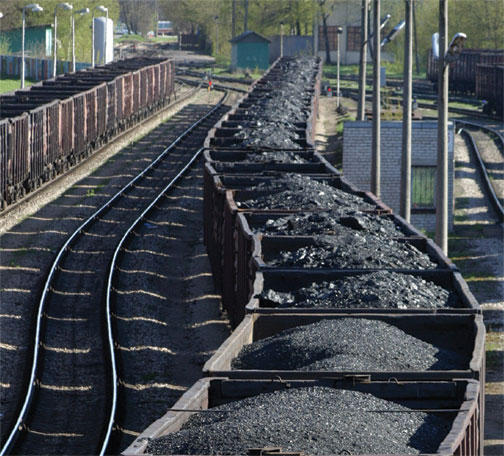
U.S. Exporting More Coal as Domestic Decline Continues
 When we look back years from now, 2012 may be remembered as a pivotal year for the U.S. coal industry. Although the ongoing shift in the nation’s electricity sector from coal to natural gas is nothing new, recently released data from the Energy Information Administration confirms that last year was an awful year for King Coal.
When we look back years from now, 2012 may be remembered as a pivotal year for the U.S. coal industry. Although the ongoing shift in the nation’s electricity sector from coal to natural gas is nothing new, recently released data from the Energy Information Administration confirms that last year was an awful year for King Coal.
Last year, U.S. coal consumption for electric power declined by 11.5% from 2011 levels, an enormous drop off for an industry that has been the mainstay of the American electricity sector for decades. As a share of electricity generation, coal dropped from 42% of total electricity in 2011 to only 37% in 2012, while natural gas surged from 25% to 30% over the same time frame.
The drop in demand for coal has led to production cutbacks, mine closures, and forced multiple mining companies into bankruptcy. U.S. coal production declined by 7.2% last year from 2011 levels, and the fourth quarter was the second lowest quarter dating back to 2006 (only last year’s 2nd quarter was worse).
These are hard times for the coal industry, and as EPA rolls out limits on greenhouse gases for new power plants, and with much more significant limits on existing power plants rumored to be in store, the coal industry’s future in the U.S. looks bleak.
However, seeing the writing on the wall, the coal industry has shifted its focus to exporting. While the U.S. hopes to shift beyond coal for electricity, the rest of the world continues to burn more coal as their economies grow. China alone consumes nearly as much as the rest of the world combined, and is expected to be a major reason why coal may become the dominant source of energy by 2017.
To feed that demand, the U.S. is exporting near-record levels of coal abroad. Europe accounted for more than half of U.S. coal exports, along with China, South Korea, Japan, and India.
U.S. port activity reflects these destinations – more than half of U.S. coal exports leave from East Coast terminals (an estimated 38% of total coal exports passed through Norfolk, VA) and the Gulf Coast (New Orleans accounted for 22% of total coal exports). 
To date, very little coal exports ship from the West Coast – only 6% leave all West Coast terminals combined. The industry wants to build new coal export terminals in Oregon and Washington in order to send more coal to Asia. These plans have raised the ire of locals (concerned over coal dust pollution) and environmental groups (due to the effects on the global climate). Since climate change is a global equation, reducing emissions by burning less coal in the U.S. doesn’t do much if it is offset by more emissions elsewhere.
The Governors of Oregon and Washington sent a letter to the White House requesting guidance on how coal exports fit in with the national interest. They have specifically asked the federal government to weigh the climate impacts of coal exports.
While it remains to be seen whether or not new port facilities on the West Coast move forward, it seems that exports for the coal industry may be its only lifeline at this point.







Timely. Did you see wonkblog did a similar post based on a Duke study: http://www.washingtonpost.com/blogs/wonkblog/wp/2013/04/08/study-the-coal-industry-is-in-far-more-trouble-than-anyone-realizes/
… [Trackback]…
[…] Read More here: americansecurityproject.org/blog/2013/u-s-exporting-more-coal-as-domestic-decline-continues/ […]…